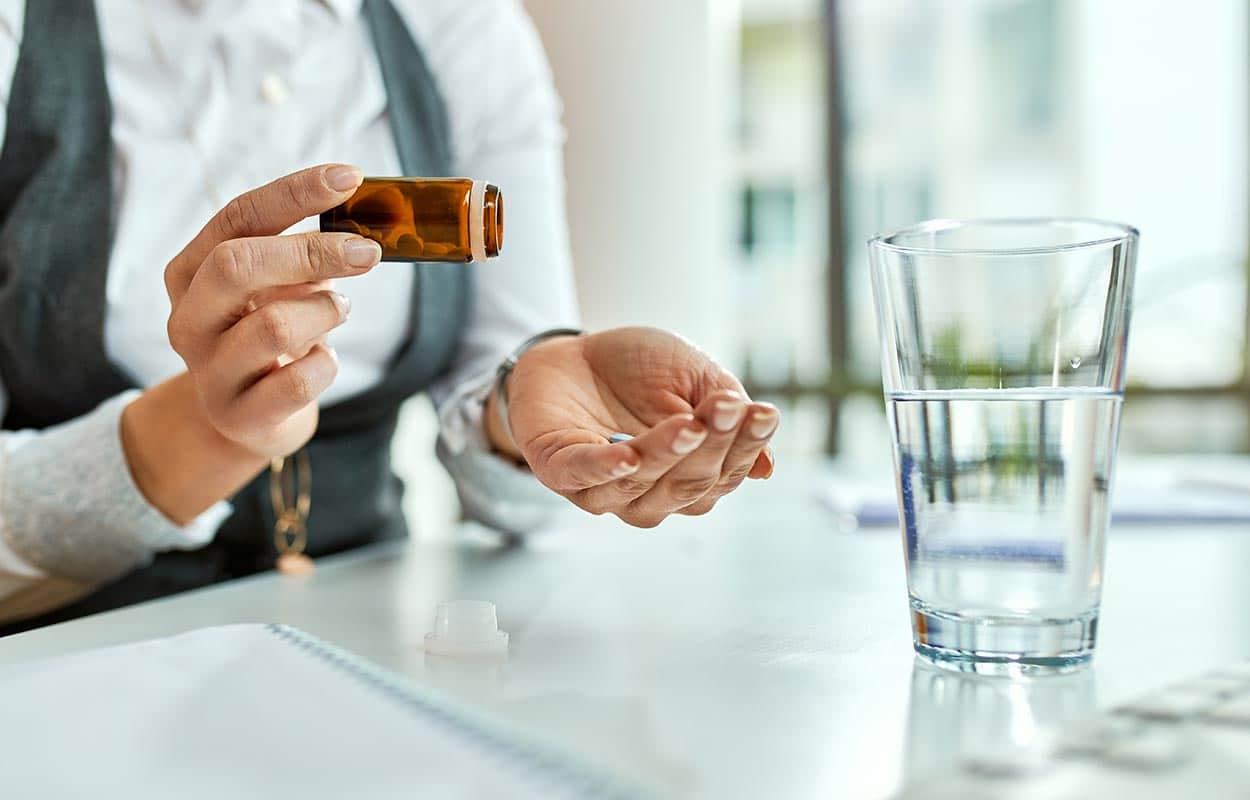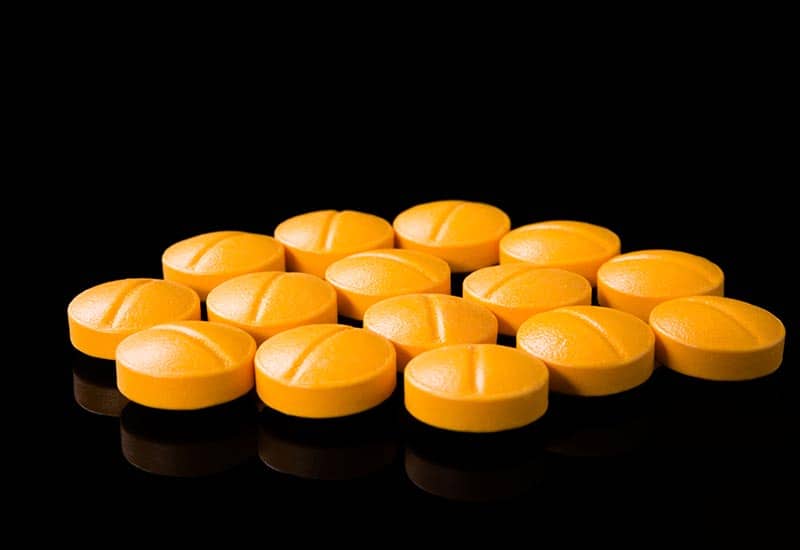Is Methocarbamol Addictive? Risks, Safe Use & Alternatives
Medically Reviewed By:
Written By:
Updated On: August 4, 2025
Last Medically Reviewed on: August 4, 2025

Table of Contents
Key Points
- Methocarbamol is a short-acting skeletal-muscle relaxant, but it’s not classified as a controlled substance.
- Physical dependence is uncommon, but misuse can happen at higher doses or when mixing with other substances.
- Pair low-dose, time-limited methocarbamol therapy with physical therapy and lifestyle tweaks, and fall back on professional help for misuse.
Methocarbamol is a prescription skeletal-muscle relaxant that’s sold under the brand name Robaxin. Typical painkillers target inflammation or pain receptors; methocarbamol acts in the central nervous system. It dampens the pain signals that trigger painful muscle spasms and helps muscles to “unclench”.
Prescribing clinicians will usually prescribe low, divided doses for acute back pain, sprains, strains, whiplash, or tetanus-related muscle rigidity. Since the benefits peak during the first few days, methocarbamol is not usually prescribed for more than 2 or 3 weeks at a time. Short-term use is the primary strategy for reducing pain to levels that allow for physical therapy and gentle stretching, which are the genuine keys to long-term muscle flexibility recovery.
Is Methocarbamol Addictive?
Methocarbamol can lead to drowsiness and lightheadedness, which some people may find pleasurable, but it doesn’t trigger any dopamine surge or feeling of euphoria. In this sense, it doesn’t have the same addiction potential as drugs like benzodiazepines, opioids, or stimulants. Methocarbamol has an addictive potential similar to, but weaker than, lorazepam (Ativan.) Higher doses can cause dysphoria. As a result, the DEA has not placed methocarbamol in the controlled substances scheduling framework, and actual physical dependence is considered clinically rare.
Methocarbamol works by slowing down activity in the brainstem and spinal cord (in the central nervous system), leading to muscle relaxation and mild sedation. This means that users only feel a calming fatigue, not a sense of intoxication, and tolerance develops more slowly, if at all. That said, high doses can make dizziness worse and can create blurred vision and euphoria-like sensations, which can develop temptations for recreational use in some individuals.
Compared to carisoprodol or Soma, which is a Schedule IV substance with qualities similar to barbiturates, methocarbamol shows much lower abuse potential. Still, any CNS depressant can be misused to amplify alcohol or opioid effects, so healthcare providers caution against combining methocarbamol with opioids, benzodiazepines, or alcohol.
The Bottom Line: Can Dependence or Withdrawal Occur?
If someone takes chronically high doses for weeks, discontinuation may bring headache, nausea, or rebound muscle spasms, but these symptoms are typically mild and short-lived. A gradual taper or dose spacing often prevents discomfort. Persistent cravings, doctor shopping, or taking pills for sedation rather than spasm relief signal possible misuse and warrant a professional evaluation.
Simply put, methocarbamol is unlikely to cause addiction when used as directed, but the drug’s sedative profile means it still carries a level of risk when mismanaged or paired with other nervous system depressants.
How Methocarbamol Compares to Other Muscle Relaxants
Cyclobenzaprine
Cyclobenzaprine works on brainstem receptors to break the muscle-spasm cycle, but it also has a strong tendency to lead to dry mouth, constipation, and grogginess. It stays in the body longer than methocarbamol, making next-day drowsiness more likely.[1] Abuse cases are uncommon, but high doses can lead to a mild buzz.
Carisoprodol
Carisoprodol converts into meprobamate, a barbiturate-like sedative. This metabolite causes noticeable mood changes, so the drug carries a Schedule IV designation for abuse potential. Schedule IV substances are those with a low potential for abuse and low risk of dependence, but it’s not nonexistent. Soma users may chase relaxation or euphoria, particularly when combining it with alcohol or opioids. Prescribers generally lean toward methocarbamol or cyclobenzaprine first.
Diazepam/Clonazepam
Though not traditional muscle relaxants, benzodiazepines reduce spasms by calming the central nervous system.[2] They can trigger dependence in just a few weeks. Abrupt cessation causes intense withdrawal symptoms, including extreme anxiety, tremors, and even seizures.
Signs of Misuse, Dependence, and Overdose
The most common red flags are taking more frequent or greater doses than prescribed. Crushing tablets to feel a more substantial effect more quickly is also an indicator of misuse, along with combining pills with alcohol and doctor shopping.
Withdrawal effects from methocarbamol are rare, but still possible after several weeks of high-dose use. The most common withdrawal symptoms include rebound muscle spasms, headache, nausea, mild anxiety, or insomnia within a day or two of stopping. The effects are usually short-lived.
Extreme drowsiness that progresses to unresponsiveness, loss of consciousness, very slow breathing, or seizures should be considered an emergency situation. Call 911 immediately. Overdose can also present with clammy skin, low blood pressure, or a rapid but weak pulse. If methocarbamol has been mixed with opioids, alcohol, or benzodiazepines, tell paramedics so they can give the proper antidotes and breathing support.
Common and Serious Side Effects
Most users won’t experience more than one or two of these, and they’ll generally fade as you get used to the medication. However, we’ve listed them in order from most common to least common, so if you are experiencing any of the symptoms past #3, you should seek medical help promptly.[3]
- Drowsiness and fatigue: The most reported issue, affecting up to one-third of users; plan for extra caution with driving or machinery until you know your reaction.
- Dizziness, light-headedness, blurred vision: Often linked to the first few doses; rise slowly from chairs or bed, and stay hydrated.[4]
- Headache, upset stomach, metallic taste: Typically mild and short-lived; taking tablets with food or water eases discomfort.
- Allergic reactions: Itching, hives, or facial swelling can appear in sensitive individuals; stop the drug and seek prompt medical advice if swelling or trouble breathing occurs.[5]
- Low blood pressure and fainting: Rare but possible, especially when methocarbamol is combined with alcohol, opioids, or antihypertensives; sit or lie down if you feel faint and inform your provider.
- Liver stress signals: Persistent nausea, right-sided abdominal pain, dark urine, or yellowing skin and eyes suggest jaundice; urgent lab tests are needed to rule out serious injury.
- Severe central-nervous-system depression or seizures: This is extremely uncommon and usually tied to very high doses or mixing with other depressants. This slows the natural rates of essential functions like heart rate and breathing, and can be dangerous. Call 911 for unresponsiveness, shallow breathing, or convulsions.
Evidence-Based Treatment Alternatives to Stop Muscle Spasms
Short courses of methocarbamol work best when paired with therapies that address the root cause of muscle tension.
Physical therapy tops the list.[6] Targeted stretching and strengthening relax tight muscles and correct posture faults that cause recurring spasms. For acute flares, heat packs improve blood flow while ice calms inflammation.
Over-the-counter anti-inflammatory medicines such as ibuprofen or naproxen can reduce pain and swelling if your stomach and kidneys tolerate them. Some patients find relief from massage, acupuncture, or gentle yoga, all shown in studies to ease musculoskeletal pain and improve range of motion.
A magnesium-rich diet and proper hydration support muscle function, and stress-management practices like paced breathing or mindfulness cut the tension loop.[7]
Asking for Help & Treatment Options for Misuse
If you or someone you care about has been taking methocarbamol in higher amounts or at a higher frequency than what was initially prescribed, it’s time to reach out to a professional. The same applies if it’s being mixed with alcohol or opioids to give it a more potent effect. These are all signs of potentially escalating misuse. Early intervention can keep misuse from escalating into a substance misuse disorder.
The first step should be to have an open, honest talk with a trusted healthcare provider. They should be able to design a taper program to help avoid the rebound spasms and discomfort associated with sudden discontinuation. People with co-occurring opioid use disorder or benzodiazepine use may need to complete a medical detox program, where vital signs and withdrawal symptoms are monitored on a 24-hour basis.
Following detox completion, treatment options can range from inpatient or residential treatment programs that can last 30 days or more, to outpatient programs that may only need one brief therapy visit per week. During treatment, patients learn coping skills and relapse prevention strategies while participating in peer support groups and evidence-based behavioral therapy modules. Family education and counseling sessions can help loved ones set boundaries and offer encouragement without enabling.
Struggling With Misuse?
Even though methocarbamol isn’t classified as a controlled substance or even as particularly addictive, any sedative can become risky if doses start to climb or they’re combined with other substances. When used for a predetermined timeframe, and combined with non-medication treatments like physical therapy, heat, stretching, and targeted lifestyle changes, it’s highly effective at reducing spasms so healing can occur.
Stay alert to side effects, and stick to the lowest dose that’s still effective. When your provider schedules check-ins, stick to them, and be honest about how effective it is and any side effects you may be experiencing.
Frequently Asked Questions About If Methocarbamol is Addictive
Can methocarbamol cause physical dependence like opioids or benzos?
Actual dependence is relatively rare, since methocarbamol doesn’t create the euphoric dopamine rush, which is usually the foundation of the addiction cycle.
Why do doctors still warn about misuse if methocarbamol is not a controlled substance?
When it’s taken at high doses, or when regular doses are combined with alcohol, opioids, or potent depressants, the sedative effect can become intoxicating and can slow respiration. Misuse raises the risk of overdose, so the emphasis is typically on short-term use of low doses and avoiding interactions.
How can I tell if a loved one is misusing methocarbamol?
Red flags include taking pills more often than prescribed, combining them with alcohol or painkillers to enhance sedation, doctor shopping for extra prescriptions, or showing persistent drowsiness and confusion.
There is a Better Way to Live. It's Time to Get the Help You Deserve.
Take the first step in getting your life back. Speak with our admissions team today.Sources
[1][2]van Tulder, M. W., Touray, T., Furlan, A. D., Solway, S., & Bouter, L. M. (2003). Muscle relaxants for non-specific low back pain. The Cochrane database of systematic reviews. https://pmc.ncbi.nlm.nih.gov/articles/PMC6464310/
[3][4][5]National Institutes of Health. (n.d.). DailyMed – Methocarbamol- Methocarbamol tablets tablet, coated. U.S. National Library of Medicine. https://dailymed.nlm.nih.gov/dailymed/lookup.cfm?setid=7d4dd78a-f902-6ff2-e053-2991aa0ac7d7&version=6
[6][7]Witenko, C., Moorman-Li, R., Motycka, C., Duane, K., Hincapie-Castillo, J., Leonard, P., & Valaer, C. (2014, June). Considerations for the appropriate use of skeletal muscle relaxants for the management of acute low back pain. P & T : a peer-reviewed journal for formulary management. https://pmc.ncbi.nlm.nih.gov/articles/PMC4103716/



